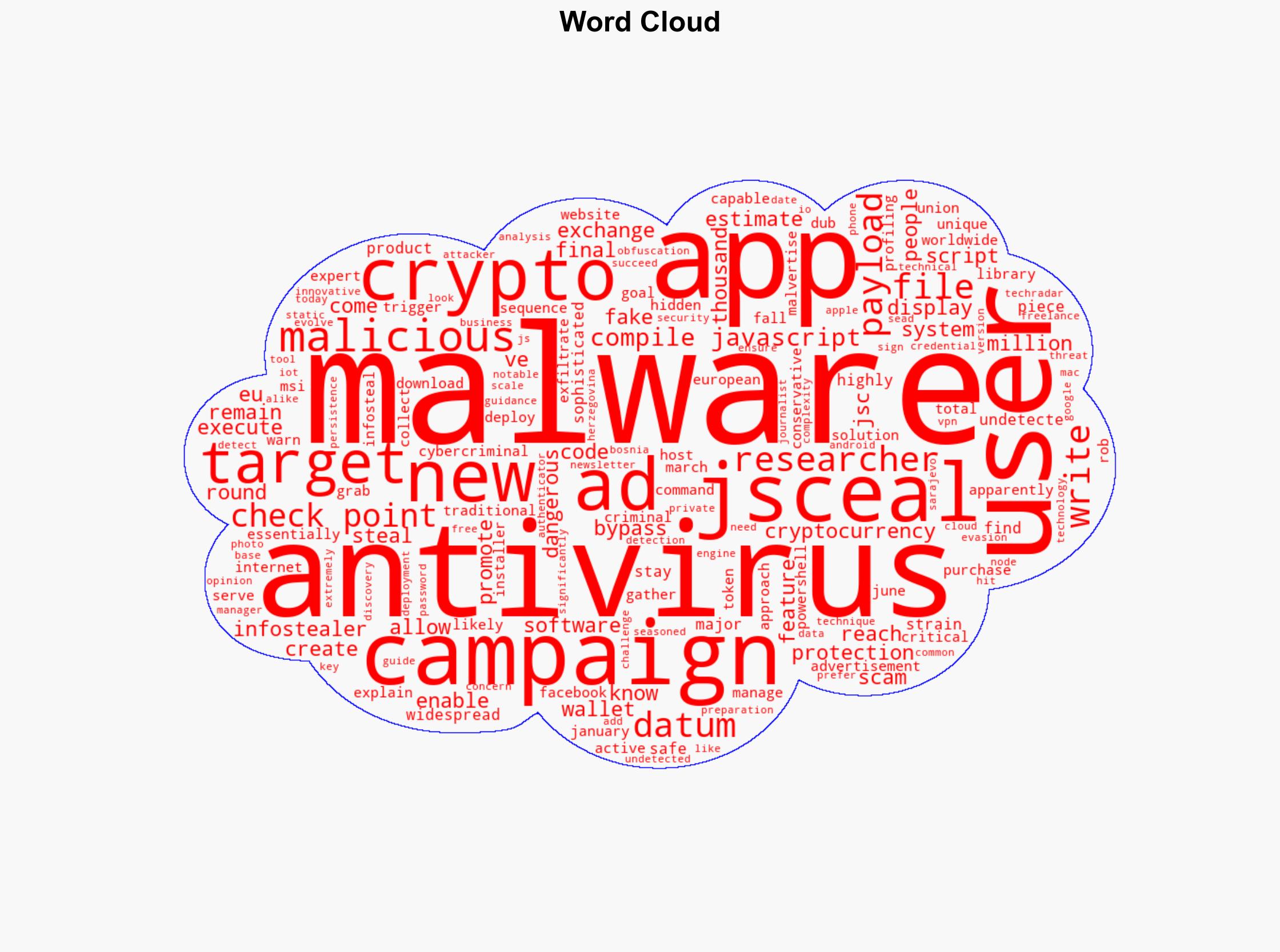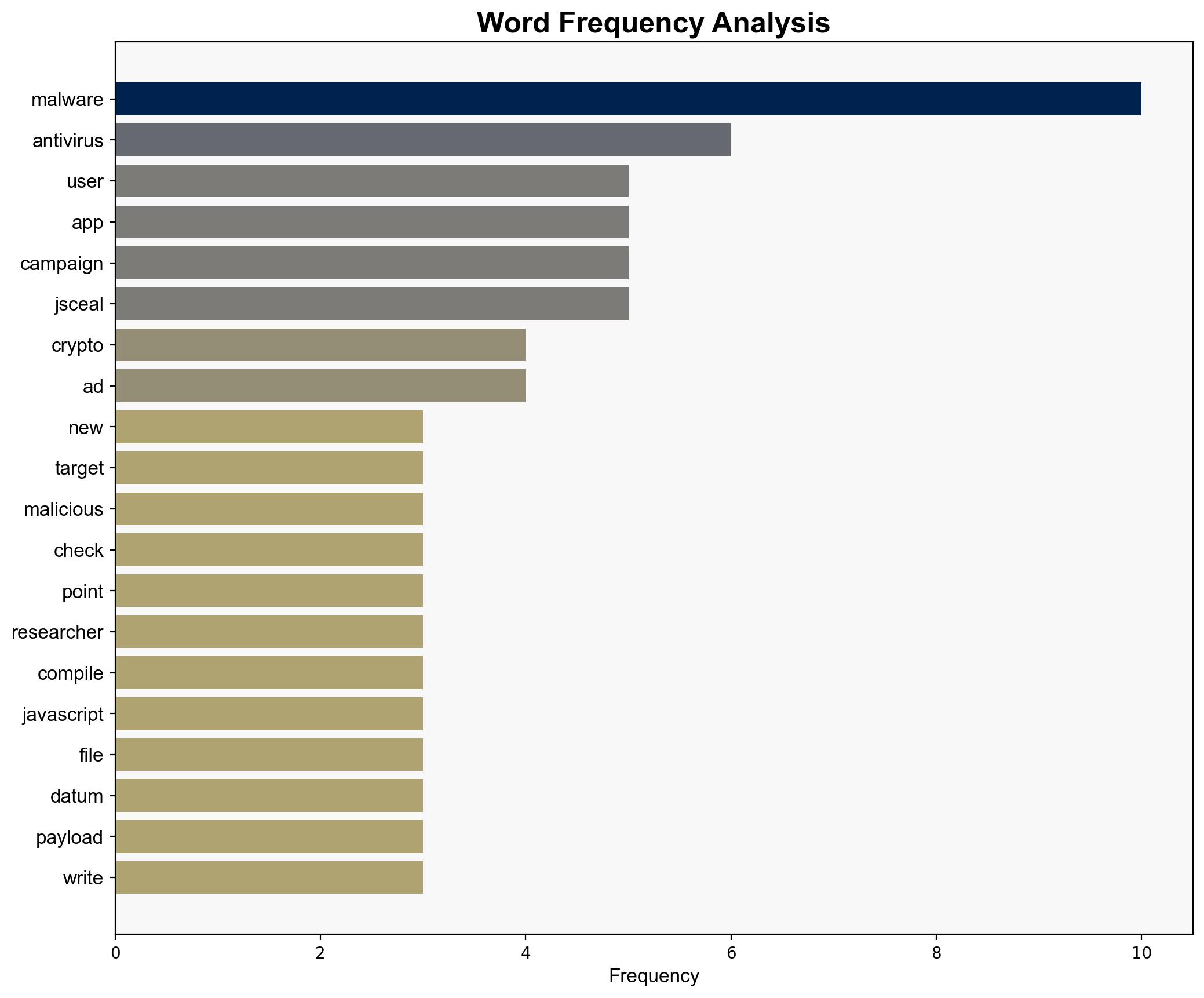Major new malware strain targets crypto users via malicious ads – here’s what we know and how to stay safe – TechRadar
Published on: 2025-07-30
Intelligence Report: Major new malware strain targets crypto users via malicious ads – here’s what we know and how to stay safe – TechRadar
1. BLUF (Bottom Line Up Front)
The JSceal malware campaign represents a significant cybersecurity threat, particularly to cryptocurrency users, due to its sophisticated evasion techniques and widespread reach. The most supported hypothesis is that this campaign is part of a coordinated effort by a well-organized cybercriminal group aiming to exploit vulnerabilities in crypto-related transactions. Confidence level: High. Recommended action: Enhance cybersecurity measures focusing on detection and prevention of JavaScript-based malware and increase public awareness about malicious ads targeting crypto users.
2. Competing Hypotheses
Hypothesis 1: The JSceal malware campaign is orchestrated by a sophisticated cybercriminal organization targeting cryptocurrency users to steal digital assets through advanced obfuscation techniques and widespread advertising.
Hypothesis 2: The JSceal malware is a state-sponsored operation aimed at destabilizing cryptocurrency markets and undermining trust in digital currencies by targeting users and exchanges.
Using the Analysis of Competing Hypotheses (ACH) 2.0, Hypothesis 1 is better supported due to the technical complexity and financial motivation typical of cybercriminal groups, as well as the lack of direct evidence linking the campaign to state actors.
3. Key Assumptions and Red Flags
– **Assumptions:** It is assumed that the primary motivation is financial gain, and that the malware’s technical sophistication indicates a high level of expertise.
– **Red Flags:** The lack of direct attribution to specific actors raises questions about the true origin of the campaign. The reliance on Check Point’s findings without corroboration from other cybersecurity firms could indicate potential bias or limited perspective.
– **Blind Spots:** Potential geopolitical motives or connections to state actors remain unexplored.
4. Implications and Strategic Risks
The JSceal campaign could lead to significant financial losses for individuals and institutions involved in cryptocurrency, potentially destabilizing the market. The use of advanced evasion techniques may prompt a shift in malware development trends, increasing the difficulty of detection and prevention. If state-sponsored, it could escalate tensions in cyber warfare and impact international relations.
5. Recommendations and Outlook
- Enhance cybersecurity frameworks with a focus on detecting JavaScript-based threats.
- Conduct public awareness campaigns to educate users about the risks of malicious ads.
- Scenario-based projections:
- Best Case: Increased awareness and improved detection tools mitigate the impact of the campaign.
- Worst Case: The malware evolves further, leading to widespread financial losses and market destabilization.
- Most Likely: Continued targeted attacks on crypto users with gradual improvements in detection and prevention.
6. Key Individuals and Entities
Check Point researchers are the primary source of intelligence on the JSceal malware campaign.
7. Thematic Tags
national security threats, cybersecurity, cryptocurrency, cybercrime, malware, digital finance





